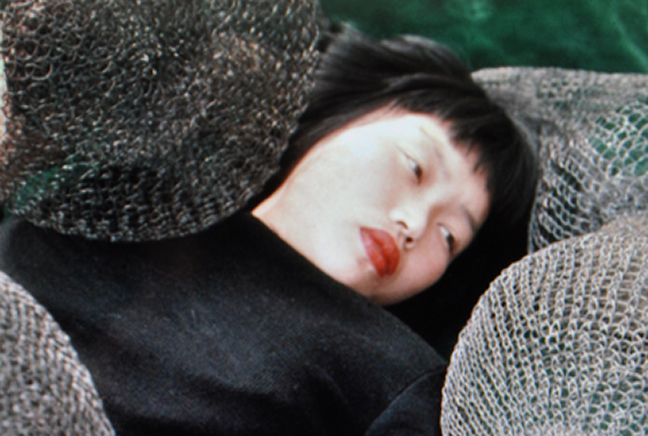March 28, 2016
Ruth Asawa is best known for her wizardry in weaving copper wire into enchanting, diaphanous forms. Her work, once at the vanguard of modernist sculpture, is still widely celebrated. This month, Asawa’s gossamer creations are featured in a Los Angeles exhibit of acclaimed women sculptors. But her contributions to the world of art don’t stop at sculpture. In San Franciscio, Asawa’s legend lives on in the form of public art installations, a hard-won legacy of arts education, and in cherished memories of the many artists and arts organizations she worked with.
Born to Japanese immigrants, Asawa was like thousands of other Nisei whose young adult lives were interrupted by World War II incarceration. As a 16-year-old in 1942, Asawa’s father was arrested by the FBI. It would be another six years before the family was reunited. Along with her mother and six siblings, Asawa was incarcerated first at the Santa Anita racetracks, then at the Rohwer concentration camp in Arkansas. While there she graduated high school and learned how to weave through volunteer work making camouflage nets.
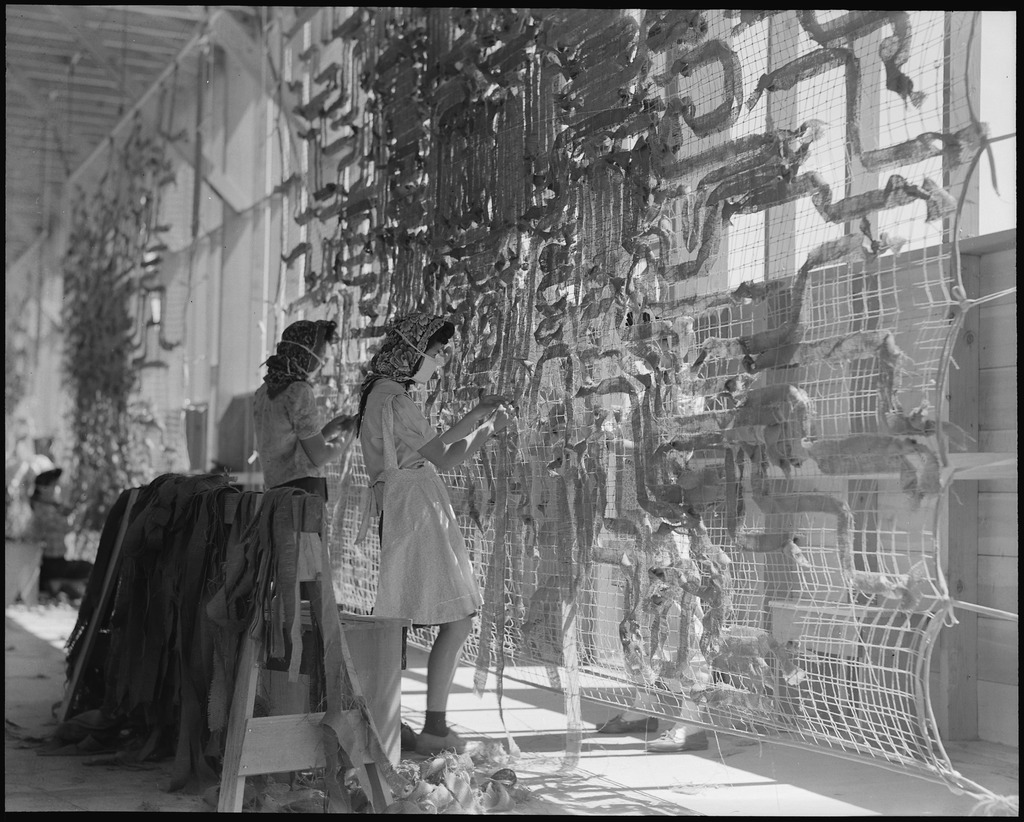
After the war, Asawa initially set out to be a teacher but anti-Japanese sentiment made it difficult to find work. She enrolled instead at North Carolina’s experimental art school, Black Mountain College. Under the guidance of architect Buckminster Fuller and German-born artists Josef and Anni Albers, she began experimenting with non-traditional materials and forms. According to Asawa, “Black Mountain gave you the right to do anything you wanted to do.”
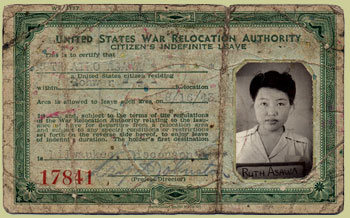
The techniques used to create the woven “forms-within-forms” that Asawa is famous for were inspired by basket-makers she met on a trip to Toluca, Mexico. Her delicate orbs are reminiscent of Japanese fishing baskets as well, but the sculptures were ultimately unique to her own vision: “I can see glimpses of my childhood in my work,” she said in later years. “We used to make patterns in the dirt, hanging our feet off the horse-drawn farm equipment. We made endless hourglass figures that I now see as the forms within forms in my crocheted wire sculptures.”
Asawa soon attracted the attention of the New York art world. In a December 1954 round-up of gallery openings a critic wrote:
“A dense, spongy kind of mobile is created by Ruth Asawa in her large, bulbously symmetrical woven brass objects dangling from the ceiling of the Peridot Gallery…If these enigmatically decorative objects resemble anything it is Japanese fishing baskets. And the consummate craftsmanship that goes into them—they seem to live and breathe—is much to be admired.”
Upon completing her studies at Black Mountain College, Asawa moved to San Francisco and married architect Albert Lanier. There they raised six children together. Asawa continued to gain recognition for her sculptures and her works now populate some of the region’s most-visited sites, including Ghiradelli Square, the Embarcadero, and Union Square. She also established herself as a vocal arts and education advocate. Beloved by her community, in 1982 the city of San Francisco declared February 12 Ruth Asawa Day in San Francisco. Asawa died there on August 5, 2013 at age 87.
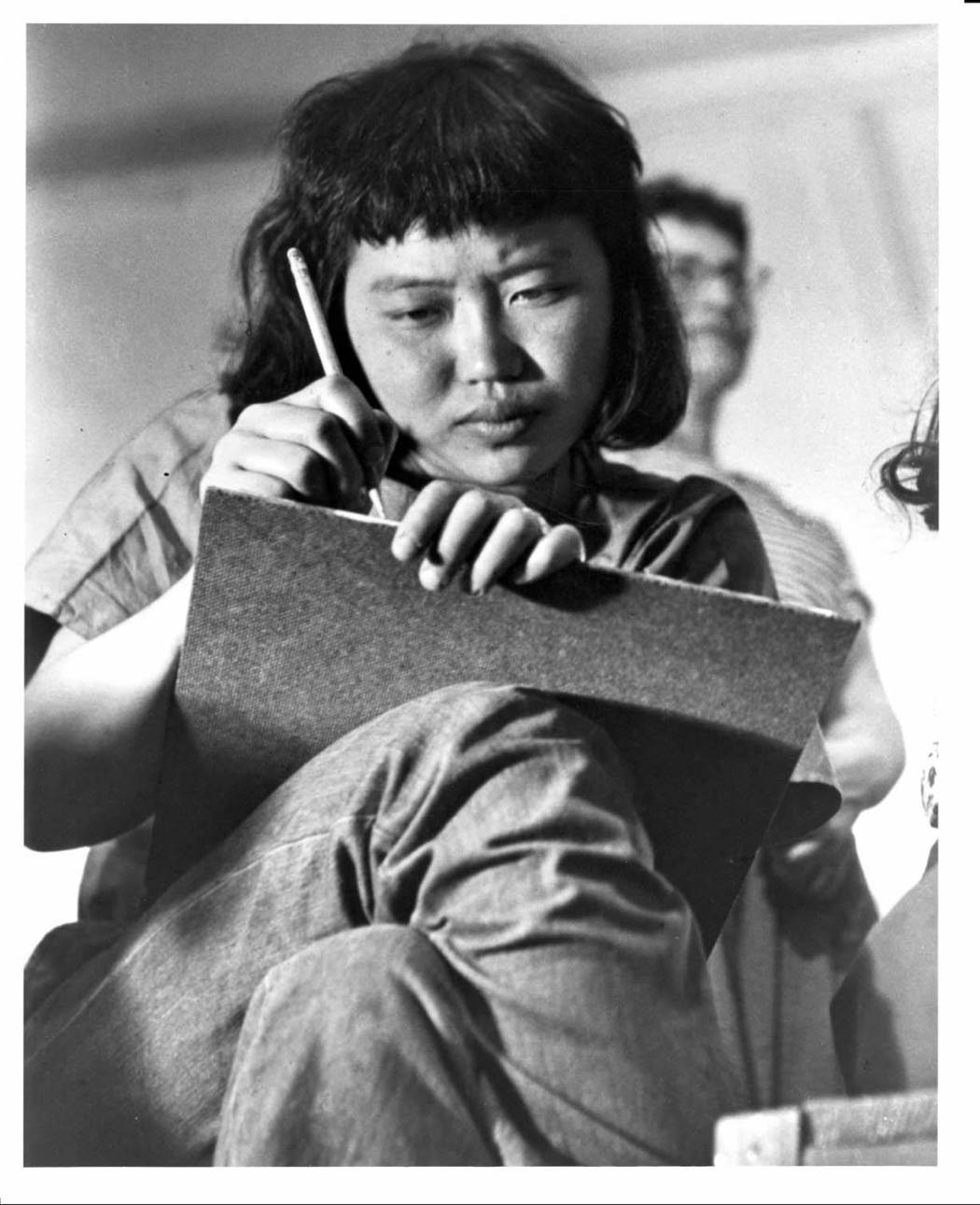

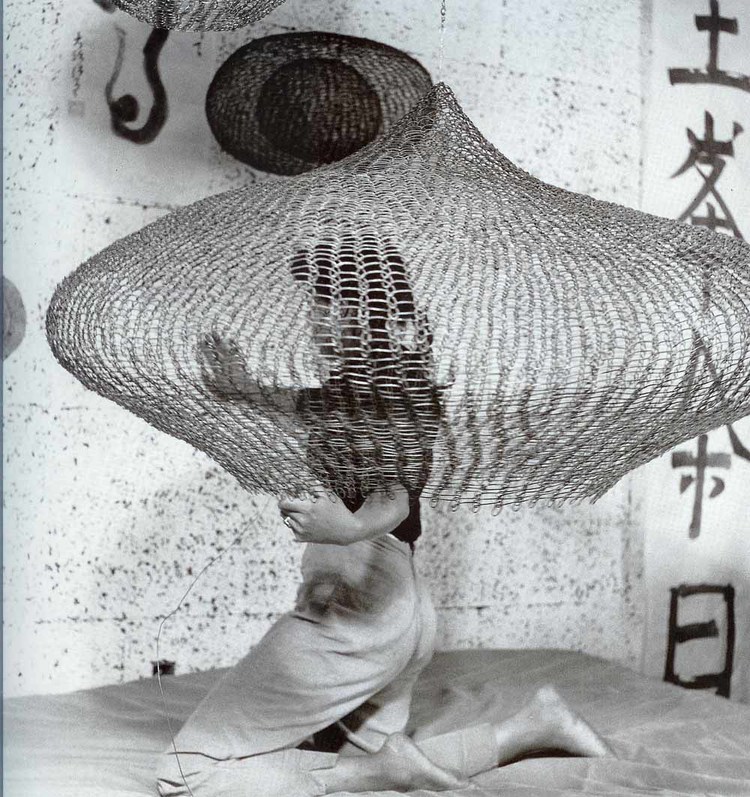

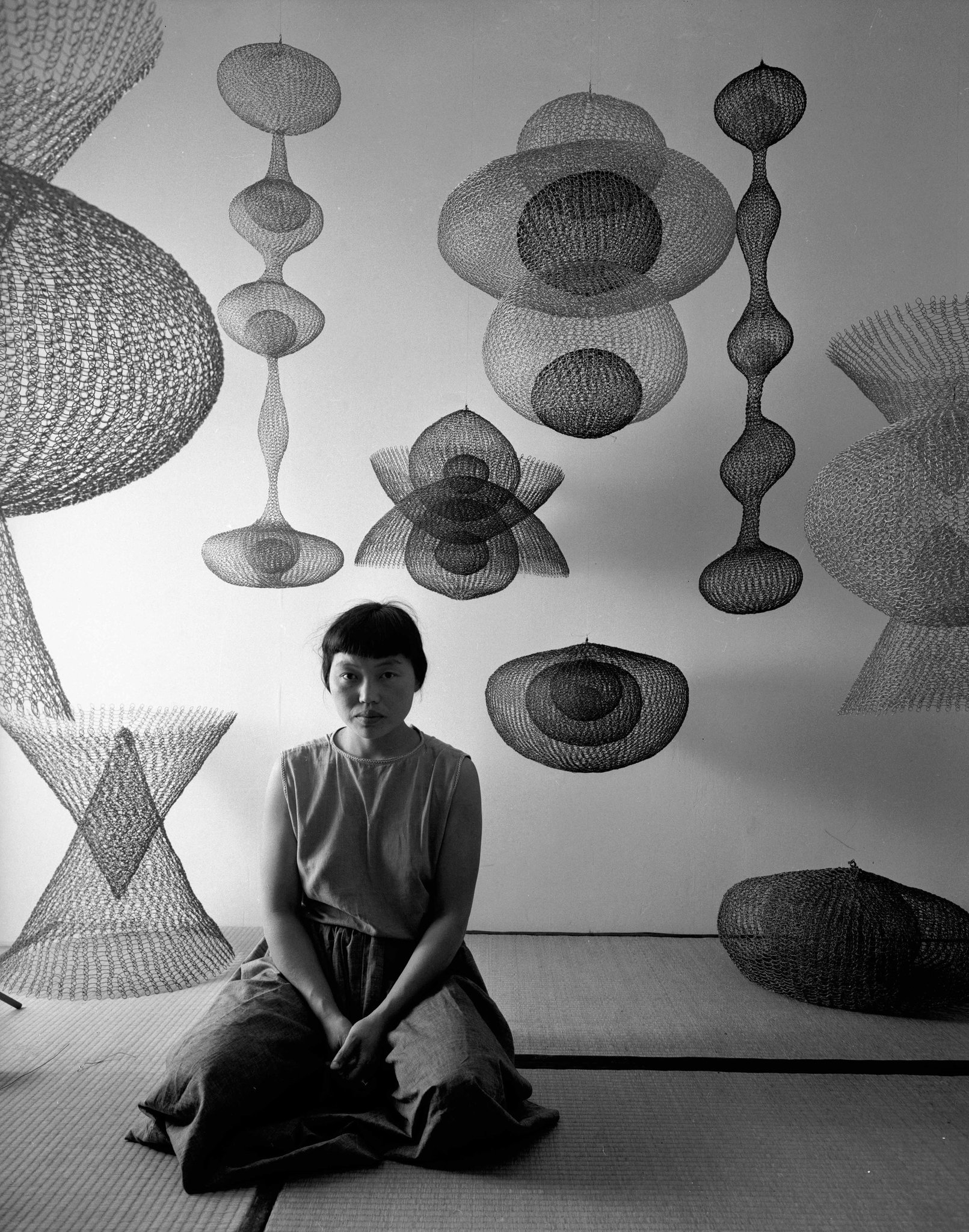
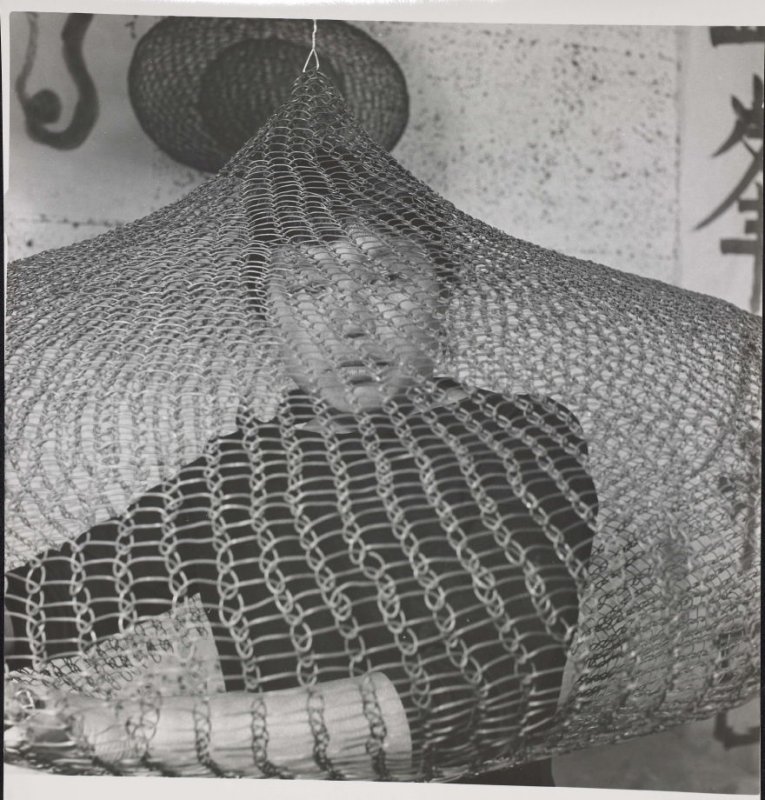
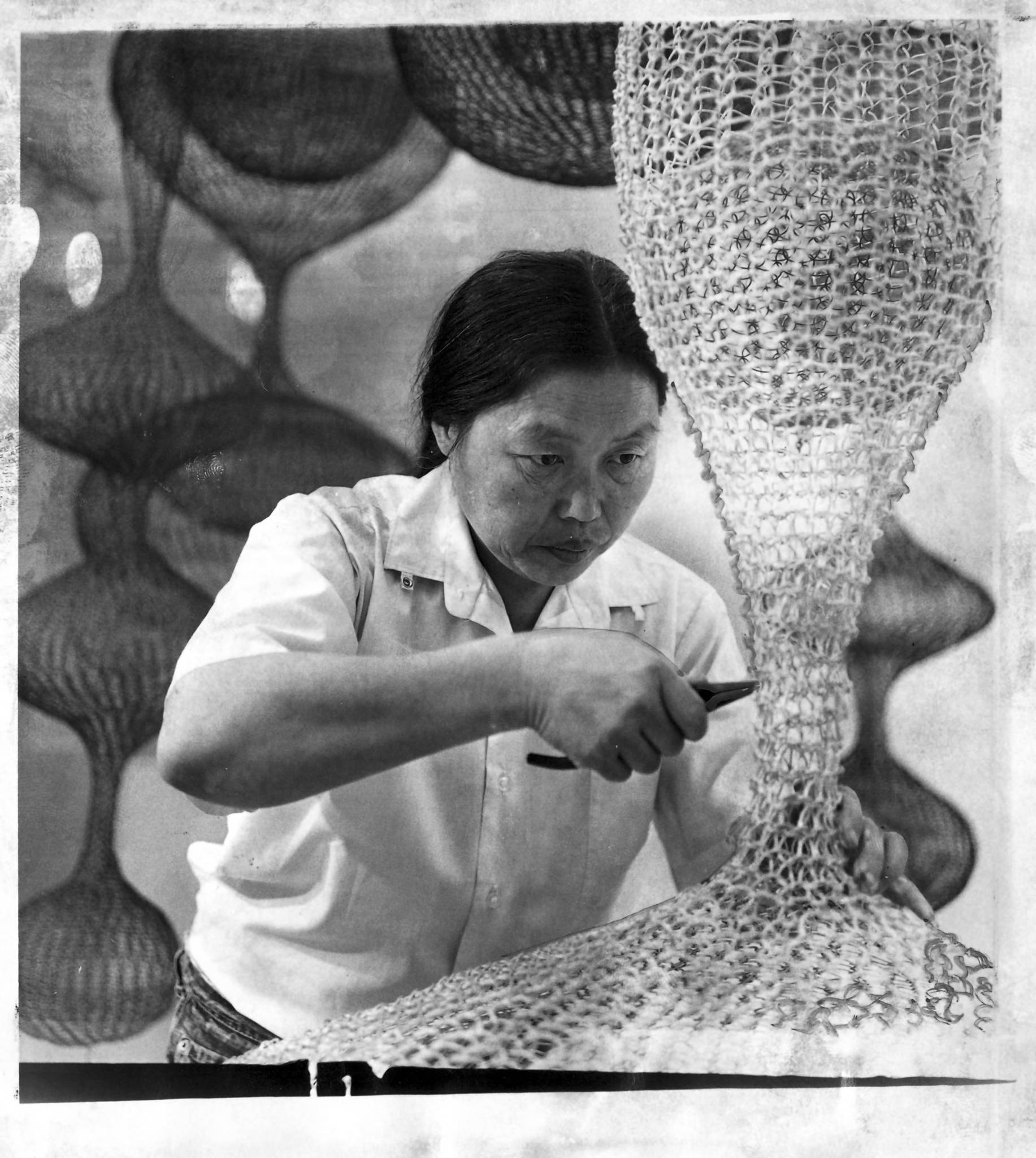
—
By Natasha Varner, Densho Communications Manager
Read more about Ruth Asawa in the Densho Encyclopedia.
[Blog header: Ruth Asawa, c. 1950’s with her wire sculptures. Via The Glass Box.]
